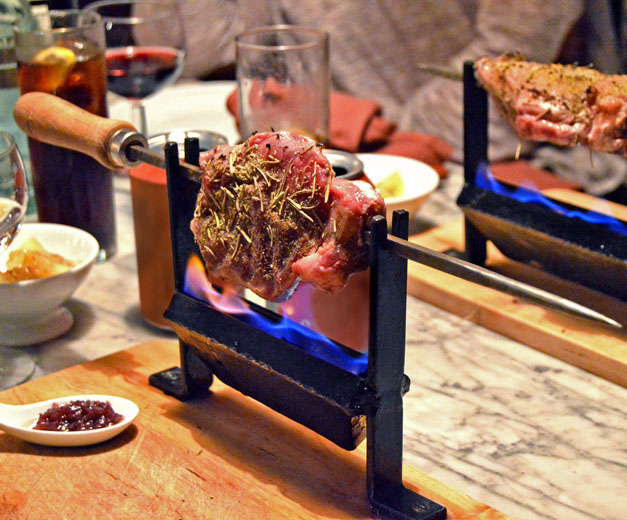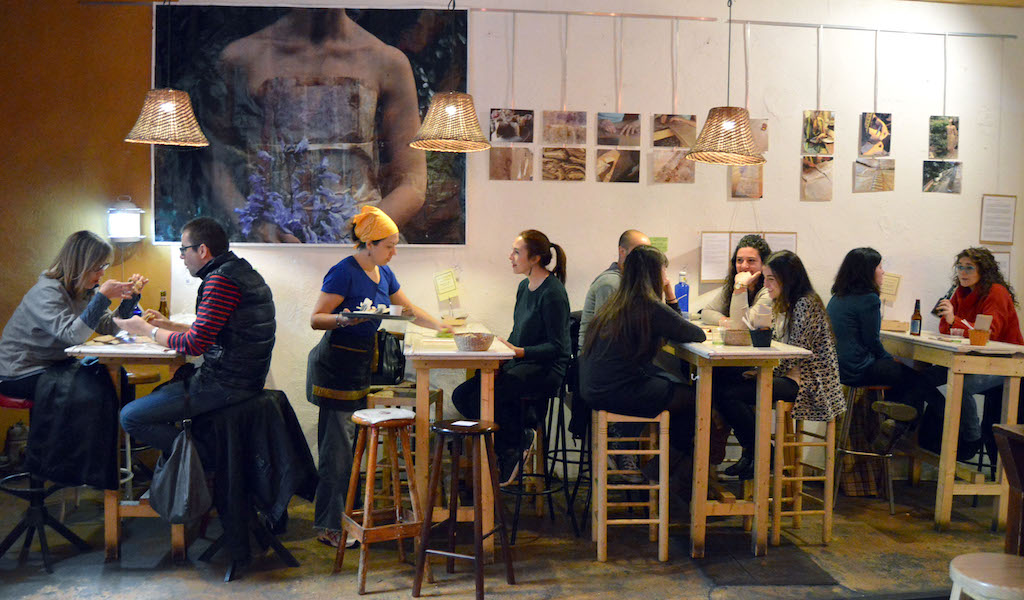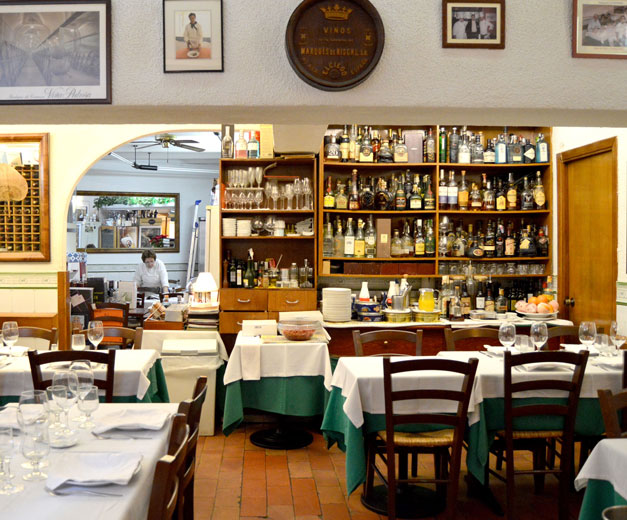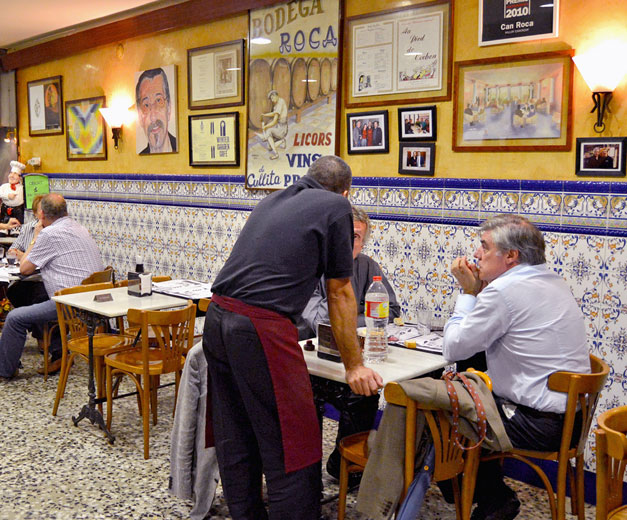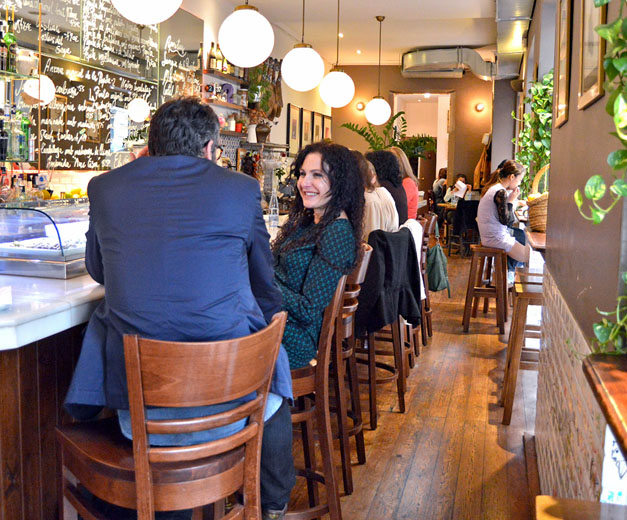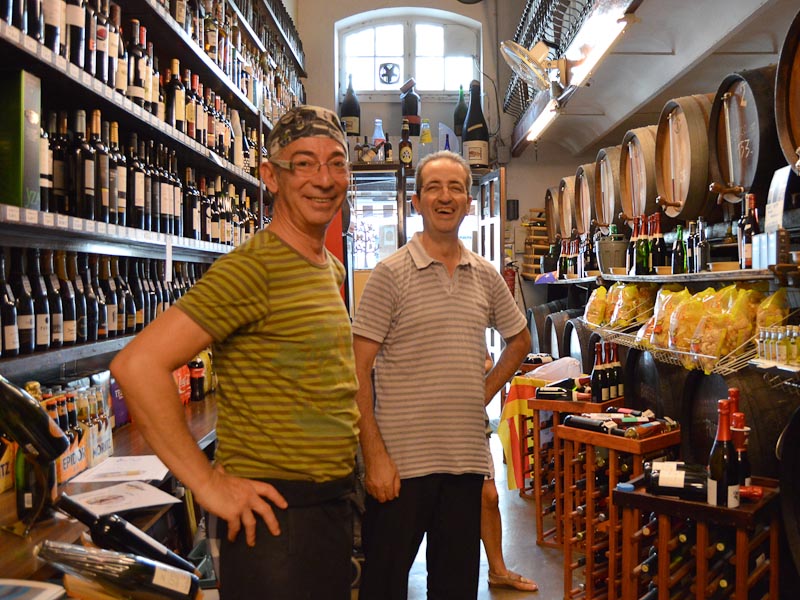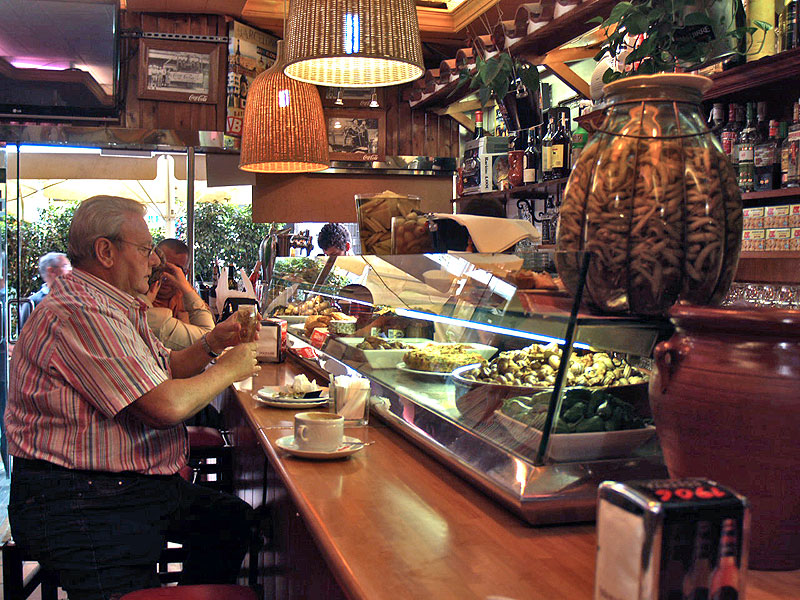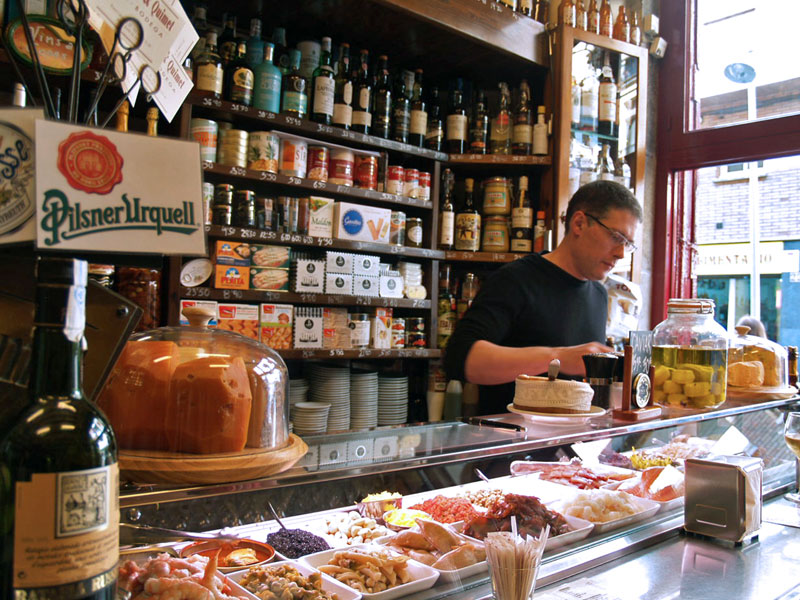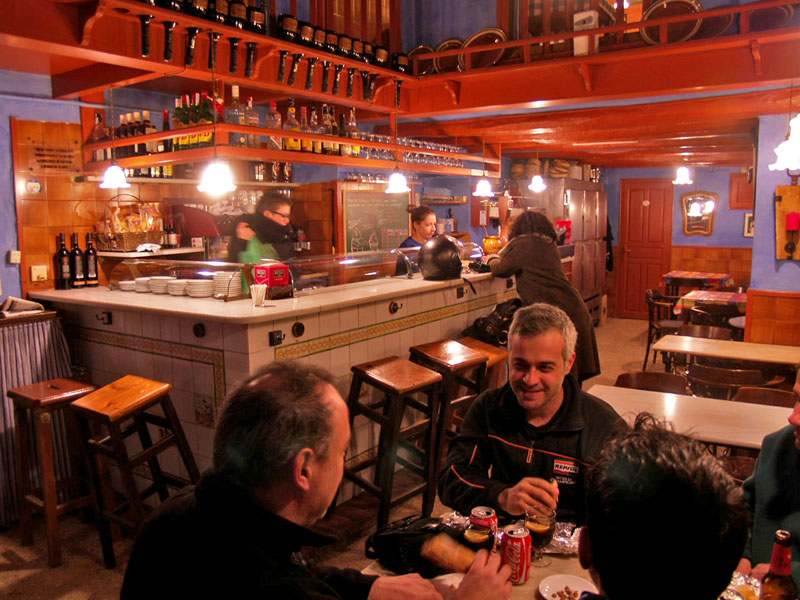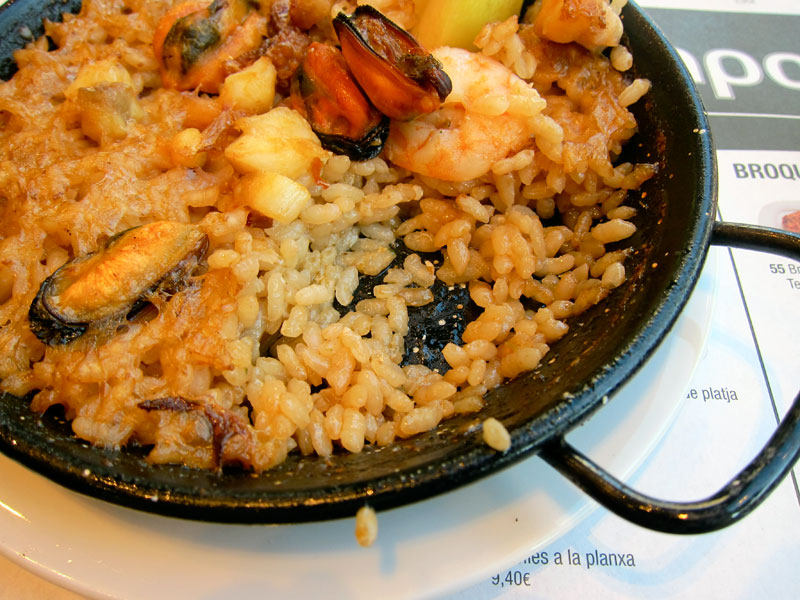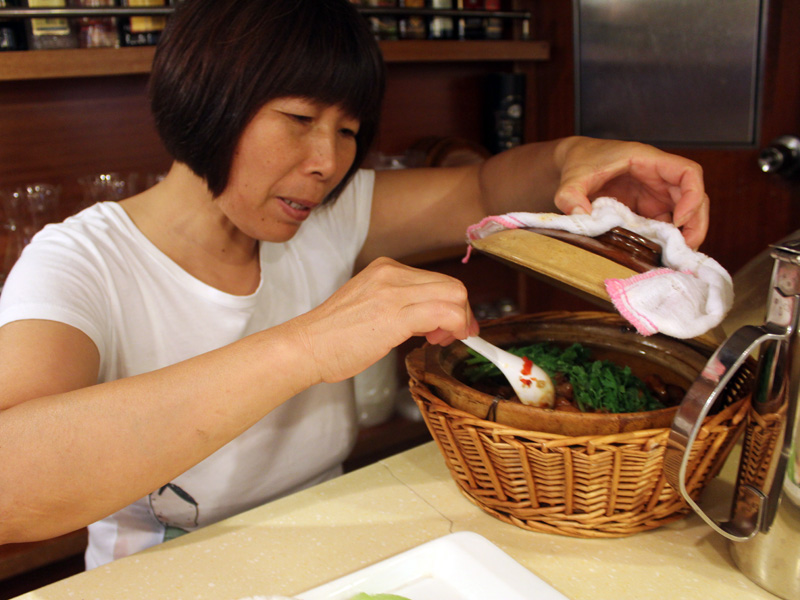We can't find the internet
Attempting to reconnect
Something went wrong!
Hang in there while we get back on track
Search results for word=paul+r
Barcelona
Everyday is Fry-Day: Where We Go For the Best Churros in Barcelona
Churros, the long, skinny, crenellated, sweet fried crullers made from just flour, water and salt, have been enjoyed for centuries in Spain, with hot chocolate and without. However, in Barcelona, xurros, as they are called in Catalan, are becoming an endangered species. In recent years, more than half of the xurrerias in the city have disappeared. Many of the old-timer xurreros who still survive have the odds stacked against them: permit renewal for a street stall is near impossible; rent has become prohibitively expensive and continues to increase; or required updates to old infrastructure might prove extremely costly. However, we know of one young newcomer who has emerged with fresh energy and inspiration, incorporating lessons from the masters in his creative take on xurros. The best way to save this endangered species is to eat it, so here are our five favorite xurrerias, which make these star-shaped doughnuts with great care – and with delicious results that are worth seeking out.
Read moreBarcelona
Barcelona's Gintonics: Good to the Last Drop
Editor's note: Our third installment in the Global Bar Crawl takes us to Barcelona, where gin continues to be the drink of choice among locals. Tomorrow we head to a spot in Istanbul where you can spend an evening visiting a number of bars, all without leaving the building. Spain is a country that loves a long-drink – alcohol in combination with a soft drink, refreshing and open to invention and reinvention. On the heels of creative gastronomy’s efflorescence in recent years, many old drinks, cuisines and forgotten ingredients have returned, revived through new and more sophisticated techniques and interpretations. The gin and tonic, called gintonic here, is one such Spanish obsession, and all that ingenuity and focus have gone into taking this highball to the next level.
Read moreBarcelona
Cua Curta: The Veal Deal
Deep in the heart of El Born lies a medieval labyrinth of dark stone buildings and massive wooden doors, scant light, narrow passageways and dozens of colorful little shops, ateliers and hidden bars and restaurants. Of the last, La Cua Curta is one of our favorites, a family restaurant specializing in cheese fondue, unusual salads, carpaccios of meat and fish, homemade pâtés and a remarkable veal steak.
Read moreBarcelona
Morro Fi and Mitja Vida: The Whole Vermouth & Nothing but Vermouth
Morro Fi and Mitja Vida are two relatively new entrants to Barcelona’s vermuteo (“vermouthing”) culture, whose history stretches back to the turn of the last century. These two bars are the product of nostalgia for a bygone era fused with the social network- and urban design-driven present. The vermouth tradition in Barcelona was started in the early 20th century by Flaminio Mezzalama, who represented the Italian company Martini & Rossi in Spain, at his fabulous modernist Bar Torino. Vermut began to be produced in Catalonia, and in the following decades, the province developed its own style of the aromatic fortified drink. At the same time, the custom arose of having vermut before lunch with some pickles to whet one’s appetite. That tradition faded over time but has emerged in recent years as a kind of retro, hipster-approved pastime.
Read moreBarcelona
Ask CB: Vegetarian Eating in Barcelona?
Dear Culinary Backstreets,We are traveling with a group of friends to Barcelona. A few of us are vegetarians, and we all love good food. I know Barcelona is a meat – and particularly pork – lover’s paradise, but can you recommend any vegetarian-friendly restaurants? Is it possible to enjoy tapas and Spanish cuisine without meat or fish?
Read moreBarcelona
La Portería: Hidden Talent
Editor’s note: We regret to report that La Portería has closed. Looks can be deceiving. A case in point: La Portería appears dull at first glance, but venture down the few steps that separate this singular restaurant from the street’s frivolity and you will be rewarded.
Read moreRio
Espírito Santa: The Amazonian Kitchen
In a country the size of Brazil, you’ll have an easier time finding a carioca who’s been to Disney World than to the Amazon region, so cut off is it by vast forests and pricey airfares from the cosmopolitan southeastern cities of São Paulo and Rio. When we visited Manaus and took a days-long boat trip on the Rio Solimões, we introduced ourselves as American, living in Rio. Locals seemed uninterested in asking the usual litany of questions about America but grilled us on Rio, which they had only seen in evening telenovelas.
Read moreBarcelona
Can Ros: Put a Fork in It
Fried pig’s ears fortified with garlic and parsley, veal cheek and tongue laced with vinaigrette, hefty veal and pork meatballs, creamy artichoke or eggplant omelets or a hearty bocadillo of marinated tuna, red pepper, anchovies and olives: these esmorzars de forquilla, or “fork breakfasts,” are how a Catalonian might start his day – especially at Can Ros, a tapas-and-bocadillos joint that’s open every day from 7 a.m. until midnight. Office workers might drop by for a coffee at mid-morning, followed by the lunch crowd, which takes over from 2 p.m. to 4 p.m. Dinner, of course, lasts well into the night. It’s breakfast, however, that has made Can Ros most popular among locals.
Read moreBarcelona
El Passadís del Pep: Simple Pleasures
A hidden culinary sanctuary, El Passadís del Pep may be located in one of the most visited quarters of Barcelona, but it’s out of sight of anyone who isn’t looking for it. Once you go down the long corridor that leads to the restaurant, you don’t need to do anything, and that includes choosing what to eat. From the moment you sit down, the “house” offers you your first bottle of cava, and the celebration of food and life begins. There is no menu and there are no “daily specials,” just whatever Joan Manubens and his team decide to cook that day.
Read moreBarcelona
Best Bites 2013: Barcelona
Editor’s note: This post is the second installment of “Best Bites of 2013,” a roundup of our top culinary experiences over the last year. Stay tuned for “Best Bites” from all of the cities Culinary Backstreets covers. Forn Baluard We started the year off heating our hands near the wood-fired oven at Forn Baluard, one of Barcelona’s top bakeries. It hasn’t been around long, but it has decades of experience in its DNA, as it’s headed up by Anna Bellsolà, a fourth-generation baker.
Read moreBarcelona
El Tossal: Down from the Mountains
Now that ski season has begun in Catalonia, thousands of Barcelonans make the pilgrimage every weekend to the Pyrenees. But winter sports are not the only draw; this is also the time to enjoy the cooking at masias, traditional farm buildings that have been converted into restaurants.There, the smells of winter stews and dishes made with mushrooms, game, mongetes (beans) and butifarra (a kind of pork sausage) are motivation enough to arrive at the village early and in one piece.
Read moreBarcelona
Catalonia's White Wines: The Whole Spectrum
When we think of white wine in Catalonia, we think of its seemingly endless possibilities. Production of whites here has a 2,000-year-old history. The wide-ranging diversity in the area’s Mediterranean climate and calcareous soils, from the mountains to the sea, and the combination of old grape varieties and newly introduced “foreigners” with traditional and experimental methods of production make for innumerable styles and no taboos. Who knew white was a color with so many variations? The traditional Catalan grape varieties used to make white wine are mainly macabeo, xarel-lo, parellada and garnatxa blanca, but this area of Spain has the largest number of white grapes included in all its protected appellations (D.O.). Where other Spanish D.O.s usually are deeply defined by one or a few varieties, in the Catalunya D.O. there are more than 16 allowed – 35 counting the reds. In fact, this umbrella appellation, which covers wines that do not fall under the 10 subregion designations (Montsant, Penedès, etc.), was created to allow the use of all the grapes of the other Catalan designations in the entire area. It implicitly gives freedom to Catalan winemakers to express more than the old narrower conceptions of terroir and opens the doors to experimentation.
Read moreRio
Gracioso: Port of Call
Rio’s Port Zone is undergoing a major facelift, and whether that will nicely polish its tired face or look like a botched Botox job remains to be seen. The port is the heart of Rio Antigo and particularly central to Afro-Brazilian history.It’s home to Rio’s first favela (squatter settlement), called Providência, which was originally populated in 1897 by veterans of the War of Canudos who were told the government would provide housing when they returned to Rio and found those promises to be delayed and elusive. At this port, up to an estimated half million slaves walked in from Brazil’s shores to then be sold in the port’s slave market, treated in a hospital if they were sick or buried if they died after arrival in Gamboa, where a fascinating makeshift museum called the Cemitério dos Pretos Novos offers a view of the human bones a homeowner found while digging on her property.
Read moreBarcelona
Vell Poblenou: The Rice Stuff
[Editor's note: We're sorry to report that Vell Poblenou has closed.] When people think of rice and Spain, they think of paella. In Barcelona there are hundreds of places to eat paella. And every Thursday you can find it on the menú del día at most restaurants across the city. There’s more to Spanish rice dishes than just paella, though. The word “paella” didn’t even appear until the 18th century; recipe books from the Middle Ages talk only of rice, and particularly the Valencian and Catalan kinds. In fact, “paella” originally referred to the pan used to cook the grain, but eventually came to describe the dish as we know it: rice prepared so that the water or broth completely evaporates and sometimes is left with a toasted layer on the bottom.
Read moreBarcelona
Taverna Can Roca: Gustatory Eye Openers
Editor’s note: We regret to report that Taverna Can Roca has closed. In the neighborhood of Sant Andreu we encounter very few city visitors wandering the cobbled streets or peering at the 19th-century two-story houses that pepper this district. Through the doors of Taverna Can Roca, we find even fewer. This is a place that can be considered muy del barrio.
Read moreBarcelona
La Pepita: The Barcelona Globetrotters
We’ve written a great deal about all thetraditionalCatalan, Basque and Spanish food around town, but what about the modern, globally influenced cooking that’s taken hold in the food capitals of the world – of which Barcelona is certainly one? La Pepita is a prime specimen, with its passionate, creative young owners and food that, while anchored in the tapas tradition, reinterprets classic dishes through the cross-pollination of other cultures’ ingredients and ideas.
Read moreRio
Bistrô Estação R&R: Drink and Thrive
Favelas just aren’t what they used to be – or what you thought they were. Rio’s squatter settlements have grown up, though uneven development still leaves considerable gaps in terms of policing, sanitation, sewage and public services. But the favela label is increasingly arbitrary as Rio’s “slums” – we put that in quotes because we think that word often leads to some generous and inaccurate flights of imagination – start to look more like working-class bairros. And they’re working their way up to becoming the more intriguing and inviting parts of the carioca landscape.
Read moreBarcelona
Bodega Manolo: More than Meets the Eye
At first glance, Bodega Manolo seems like the usual wine shop/tapas bar that Barcelona does so well: a solid place to replenish our wine stocks from the barrels, quench our thirst with a cold caña or satisfy our hunger pangs with a vermut and a tapa or two of oil-drenched anchovies. None of which sound too shabby. However, we know to venture through to the rear, where, at dinnertime, the brilliant white tablecloths reveal the venue’s greater ambitions.
Read moreBarcelona
La Perla de Oro: Tapas with a French Accent
Anouchka hails from Extremadura, land of jamón and some of Spain’s best dry-cured sausages. Julien is French and an expert on wine. Together, the husband and wife run La Perla de Oro (“The Gold Pearl”), a pint-sized former colmado (old-style grocery) just off Las Ramblas, where top-notch bocadillos, or baguette sandwiches, are just one of many attractions. Since opening in 1939, three generations at La Perla have supplied their Raval neighbors with cured sausages, cheeses, preserved foods, salted fish and dried legumes. They became known especially for their bocadillos.
Read moreBarcelona
Catalonia’s Red Wines: Stairway to Heaven
Legend has it that in 12th-century Priorat, in the region of Tarragona in southern Catalonia, there was a shepherd who dreamt every night of a ladder leaning against a pine tree. The ladder ascended from the valley all the way to heaven and angels climbed up and down, tending to their heavenly and earthly duties. Some Cistercian monks, upon hearing this story, took the vision as a divine message to build the monastery Scala Dei (“Ladder of God”) in that very spot. Those clever monks, noting the angels’ comings and goings, decided to become their wine suppliers and began cultivating grapes and making wine there.
Read moreBarcelona
La Pubilla del Taulat: Mix and Match
Update: This spot is sadly no longer open. The bodega side of La Pubilla del Taulat’s split-personality operation is no ordinary wine shop. While one wall is lined with hundreds of bottles from all over Spain, it’s the wall opposite that commands attention, with its row of massive casks. After nearly disappearing over the last few decades, bulk wine is back. And though customers these days are more likely to tote their wine home in big plastic jugs, the garrafa, the straw-covered flask of old, is making a comeback too. Besides the cheap tariff, there’s another upside to buying wines in bulk: custom wine blending, straight from the cask.
Read moreBarcelona
La Biblioteca Gourmande: The Tomato Whisperer
[Editor's note: We're sorry to report that La Biblioteca Gourmande has closed.] In the heart of El Raval, one of Barcelona’s most multicultural neighborhoods, lies a portal to the Catalan countryside. At La Biblioteca, which opened in 2012, the origins of the ingredients sing out clearly from each dish and plunge you into a pure culinary experience inspired by the land: the traditional farmhouses called masias, the rustic recipes of the Pyrenees, the perfume of the valleys and gardens, the modern farmers near the city and the influence on plants and herbs of the Mediterranean Sea.
Read moreBarcelona
El Tast de Joan Noi: Sea-to-Table Dining
Update: This spot is sadly no longer open. In Barcelona, food markets are longtime culinary institutions beloved by both neighbors and chefs. Their intense sights, smells and sounds are a wonderful, chaotic amuse-bouche that stimulates our senses without our even opening our mouths to taste any of the products being sold. But sometimes, we long for the chance to combine the multisensory experience of market shopping with the taste of great food. Although this concept can seem obvious, it’s actually not easy to find places that combine the selling of fresh products with their cooking.
Read moreRio
Ask CB: Getting Around Rio's High Prices?
Dear Culinary Backstreets, I hear that prices in Rio are Olympic-sized. How can I eat the best the city has to offer, without spending an arm and a leg? It’s true that prices in Rio aren’t what they used to be. As a recent New York Times article notes, Brazilians pay extremely high prices (particularly relative to wages) for just about everything from food to automobiles, due to both high inflation and a tax system that’s skewed in favor of consumption taxes. The high prices hurt both consumers and businesses. As NPR reported, one Italian restaurant in Sao Paulo recently went as far as taking tomatoes off its menu because the cost had shot up so much. Meanwhile, an influx of money – from the construction boom ahead of the upcoming 2014 World Cup and 2016 Summer Olympics and from the growing oil and gas sector developing off Rio’s coast – is driving up prices even further. Indeed, what’s most surprising about Rio’s priciest locales is how oversized the lines to get into them are.
Read moreBarcelona
Spanish Conservas: Gourmet Food? It’s in the Can
In Spain, conservas, or foods preserved in cans and jars, are not simply a matter of economic survival or a source of basic nutrition for students, hikers, military recruits and the like. Rather, the tradition of conservas more resembles that of keeping one’s most beautiful jewelry locked safe in a strongbox, to be brought out only on special occasions like Christmas, birthdays or the victory of a favorite football team. There’s nothing better than some delicate canned cockles to lavish on your parents-in-law before a holiday meal!
Read moreRio
The Protests in Rio: CB Reports
When Brazilians take to the streets and block traffic, scoff at law enforcement, set off fireworks and relieve themselves in city corners that have already seen a little too much relief, I usually assume it’s Carnaval and happily join in. But the demonstrations that have brought hundreds of thousands to the streets in recent weeks are decidedly un-carnivalesque. They are a deeply serious cry of frustration from Brazilians who, after decades of remaining quiet, are protesting the yawning gap between the success story the nation sells to outsiders and the basic needs of locals that are still far from being met.
Read moreRio
Raising Cane: Cachaça’s New Day
To call someone a cachaceiro in Brazil is to deal a pretty low Portuguese blow. The word translates roughly to “drunkard” and evokes the image of an unkempt alcoholic clutching a plastic bottle of the powerful local liquor known as cachaça. It’s no coincidence that the name of the drink made with cachaça, the caipirinha, comes from the word caipira, roughly meaning “redneck” or “country.” That the national spirit is invoked in insults is emblematic of the poor image the drink has long had, but which has recently been changing. Like the newly assertive Brazil, the sugarcane-based alcohol is finding its way into chic circles where it was once seen as a bit cheap and rustic. In the past, a posh dinner host in Brazil would offer her guests a uisque (whiskey) or imported wine. But these days, it seems cariocas are finally embracing the truth: the caipirinha is a profoundly refreshing godsend on a steamy Rio summer night. A thriving cachaceiro scene is now budding both in Brazil and among a growing fan base abroad.
Read moreBarcelona
Vermuteria Loú: Mistress of Croquettes
Located on busy Carrer de l’Escorial on the edge of Gràcia, Vermuteria Loú is a tiny, cozy venue that is exactly what we look for in a neighborhood place. The little terrace out front, with just four tables and a bar that opens to the street, encourages patrons to sit and take refreshment while observing the local street life. Inside, the scene might consist of individual drinkers slowly savoring a glass of cava at the bar while a group of men sit at the tables in the back, talking and eating one dish brought out from the kitchen after another.
Read moreBarcelona
Quimet & Quimet: Little Shop of Treasures
With its high walls lined top-to-bottom with a colorful array of bottles, the tiny Quimet & Quimet, a charming tapas bar in El Poble Sec, could easily be mistaken for just another wine shop. But step inside this culinary cabinet of wonders, one of the most famous and beautiful bodegas de tapas in Barcelona, and you will be magically whisked into another world of edible and drinkable delights.
Read moreBarcelona
El Jabalí de Ronda: Hams and Roses
Editor’s note: We regret to report that El Jabalí de Ronda has closed. Barcelona’s Avinguda del Paral·lel was, for the first half of the 20th century, a bustling boulevard of theaters, cabarets, circus shows and risqué nightlife. Nowadays, most of the grand buildings and the glamour of the thoroughfare have been erased by the rapid changes that have taken place in Barcelona, with just a few theaters and old bars from the glory days still open. Thankfully, one of the holdouts is the quirky El Jabalí de Ronda, a combination delicatessen, butcher shop and tapas bar, which still welcomes customers with its signature legs of acorn-fed Iberian ham and its cozy terrace and vases of freshly cut flowers.
Read moreBarcelona
When the Going Gets Tough, the Catalonians Get Brewing
Once a mostly beer-free country, Spain – traditionally a land of wine drinkers – has recently started to develop a taste for the sudsy beverage, and Catalonians seem to have been the main pioneers behind this growing trend. The number of local craft breweries is increasing and so is the number of beer fans, who are also learning how to brew the drink at home. Put it all together and you have a young and adventurous market that is ready to experiment with tastes and textures to create stellar new beers with a distinct Mediterranean flavor.
Read moreBarcelona
Mercè Vins: Home Away From Office
Editor's Note: Sadly, this spot is now closed. Mercè Vins is exactly between two worlds, located on the quiet, narrow and dark Carrer d’Amargós, close to the shopping area of Portal de l’Àngel, near the Cathedral and Plaça de Sant Jaume, and on the border between the Barrio Gótico and Born neighborhoods, where there are numerous offices and public institutions, filled with employees looking for a breakfast that goes beyond a sad, ersatz “croissant” or for a lunch that approximates the kind of meal they would get if they were able to sneak back home.
Read moreBarcelona
Barcelona’s Restaurants Go Underground
At Culinary Backstreets, we are all about seeking out backstreets eating at venues serving authentic cuisine and frequented mainly by locals – an approach that usually leads both to delicious food and to prices that won’t break the bank. But how about underground dining, where even locals themselves aren’t always in on the secret?
Read moreBarcelona
Calçots: Not Your Average Onion
As the legend goes, a 19th-century Catalan farmer was out experimenting in his fields when he came up with a new kind of longer, juicier green onion, the calçot. In creating the onion, the farmer produced much more than a new vegetable; he also paved the way for the rise of an idiosyncratic, and distinctly Catalan, cultural event.
Read moreBarcelona
Baluard: Bakery Rising
Spain has not traditionally been known as a country of great bread, although there are some exceptional old tahonas (bakeries) scattered around here and there. But after long decades of eating poor-quality breads, typically white or light bread with excessive additives, Spaniards are finally developing their taste for the staple. In fact, the culture of bread in Spain is in full fermentation right now.
Read moreBarcelona
Catalonia's Magic Mushroom Season
Mushroom hunting has an irresistible, magical pull. Composer John Cage, an avid mushroom collector, found them an integral part of his creative process, once writing: “Much can be learned about music by devoting oneself to the mushroom.” Every fall, thousands of Catalans likewise find themselves under the mushroom’s spell, following the elusive fungus’s silent melody into the woods, a rustic wicker basket in one hand and – more and more these days – a GPS-enabled smartphone in the other.
Read moreShanghai
Yi Sheng Yue Wei: Down-Home Cantonese
When Yi Sheng Yue Wei opened on Yongkang Lu almost three years ago, its neighbors were pajama-clad retirees, a mahogany furniture workshop and the Shikumen History Museum – which, to be honest, is actually just one history buff’s storied alleyway house. Now the two-block street is one of the most laowai-gentrified in Shanghai, with bars run by French interns, coffee shops stocked with beans from Ethiopia and competing fish-and-chips shops. Rents have skyrocketed, and there’s even talk of transforming the thoroughfare into a pedestrian street. But amongst the hustle, bustle and inebriated foreigners, Yi Sheng Yue Wei remains, loyally serving the same home-style Cantonese food as it did when it first opened.
Read moreBarcelona
La Plata: Pride (In the Name of Fresh-Fried Love)
If La Plata is good enough for Paul Hewson, it’s good enough for everyone. More commonly known by his stage name, Bono, Mr. Hewson ate here in June 2009 a few nights before kicking off U2’s 360° world tour at Camp Nou in Barcelona.
Read moreIstanbul
Şahin Lokantası: Edible Complex
For Turks, mealtime is often a complicated emotional drama, one that revolves around a lifelong effort to return to the culinary womb – in other words, Mother’s kitchen. In Turkey, Mom’s cooking sets the standard by which all others are judged and, truth be told, some of the finest meals we’ve had here have been home-cooked ones.
Read more

